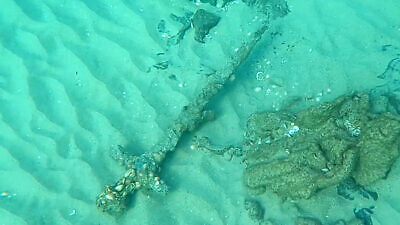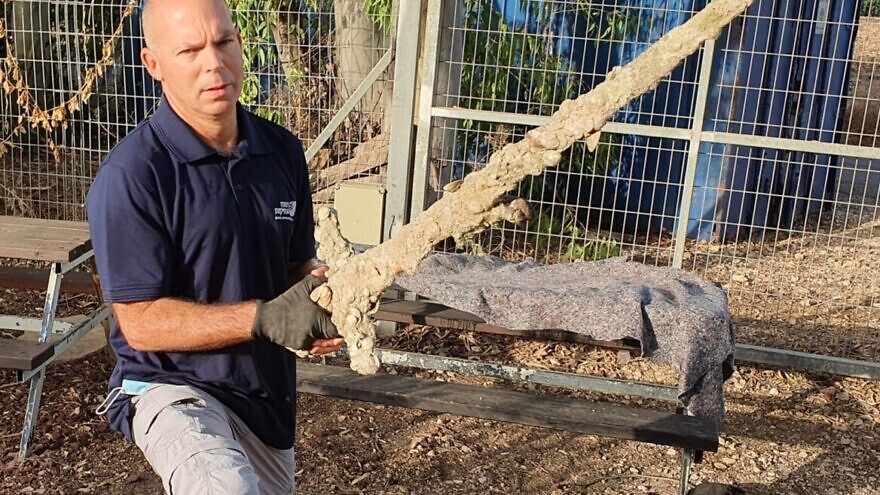If there’s proof that you can’t go anywhere in Israel without stumbling on some kind of ancient artifact, it’s got to be the news this morning that a scuba diver has discovered an ancient Crusader sword on the sea bed off the Carmel coast in the north of the country.
Atlit resident Shlomi Katzin was diving off the coast at the beach in Carmel on Saturday when he spotted ancient artifacts lying on the sea bed, uncovered apparently by shifting sands.
He took the sword ashore, fearing that the find might be stolen or buried once more by the sands, and reported it to the Israel Antiquities Authority.
“It was found encrusted with marine organisms, but is apparently made of iron. It is exciting to encounter such a personal object, taking you 900 years back in time to a different era, with knights, armor and swords,” he said.

The sword was discovered in a natural anchorage that has been in use as a temporary natural shelter for ships from the Late Bronze Age, 4,000 years ago, according to Kobi Sharvit, Director of the IAAs Marine Archaeology Unit,
“The recent discovery of the sword suggests that the natural cove was also used in the Crusader period, some 900 years ago,” said Sharvit.
Archeologists have been monitoring this particular spot on the Carmel coast since an earlier discovery in June this year. Finds are elusive, however, as they appear and disappear with the shifting sands.
“The Carmel coast contains many natural coves that provided shelter for ancient ships in a storm, and larger coves around which entire settlements and ancient port cities developed, such as Dor and Atlit,” explained Sharvit.
“These conditions have attracted merchant ships down the ages, leaving behind rich archaeological finds,” he added.
The sword has been handed over to the National Treasures Department, and Katzin was awarded a certificate of appreciation for good citizenship. Once the sword has been cleaned and researched in the Israel Antiquities Authority’s laboratories, it will be displayed to the public.
“The discovery of ancient finds by swimmers and leisure divers is a growing phenomenon in recent years, with the increasing popularity of such sports,” says Sharvit.
“Underwater surveying is dynamic. Even the smallest storm moves the sand and reveals areas on the sea bed, meanwhile burying others. It is therefore vitally important to report any such finds, which we always try to document on site, in order to retrieve as much archaeological data as possible.”
This article first appeared in Israel21c.


























